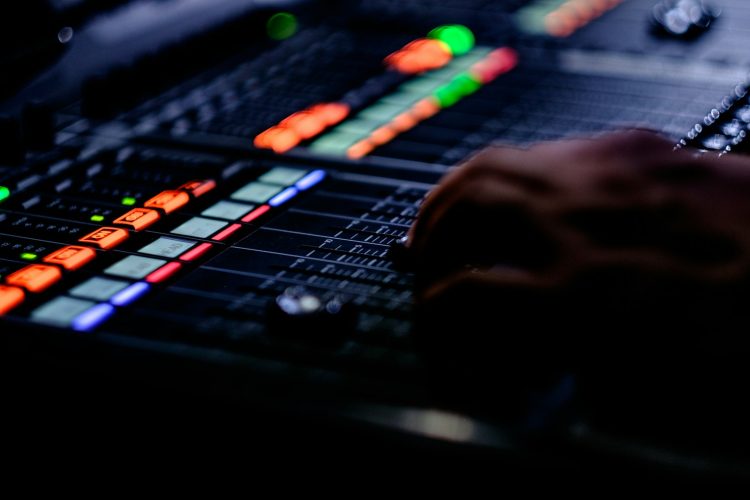There’s a particular energy that comes with live performances. Whether you’re a musician, actor, dancer, or public speaker, the moment you step onto a stage, there’s an undeniable sense of both anticipation and vulnerability. The rush of adrenaline, the thrill of connecting with an audience, and the pressure to deliver your best are all part of the unique experience. However, what many don’t realize is that behind every successful live performance lies careful preparation. It’s not just about getting on stage and hoping for the best. It’s about putting in the hard work, mastering the art of performance, and preparing mentally and physically for the spotlight.
In this guide, we’ll break down the essential steps you need to take when preparing for a live performance. From rehearsals to the final curtain call (or encore), every element of the process is crucial to delivering an outstanding show. So, whether you’re preparing for a concert, a theater production, or any live performance, here’s how you can ensure you’re ready to shine.
1. Start with Solid Rehearsals
Rehearsals are the backbone of any successful live performance. Whether you’re a solo performer or part of an ensemble, this is where you fine-tune your craft. Rehearsals allow you to not only get comfortable with the material but also to understand the flow of the performance and anticipate any potential challenges that may arise.
For musicians, this means running through your setlist multiple times until each song feels second nature. For actors, it’s about memorizing lines, blocking out movements, and understanding the emotional arc of the performance. Dancers, too, need to rehearse their choreography until every step is ingrained in their muscle memory.
But rehearsing isn’t just about repetition; it’s about refinement. Here are a few tips to make your rehearsal time as effective as possible:
- Set a Structured Schedule: It’s easy to lose track of time or get distracted during rehearsals, so make sure you have a clear schedule. Break down your set or script into manageable chunks, and focus on one section at a time. This will help you maintain momentum without overwhelming yourself.
- Rehearse Under Performance Conditions: Practice as if you’re already on stage. Rehearse with full energy, even if you’re just in a rehearsal space. Stand up, move around, and project your voice (for singers and actors) as you would in front of an audience. If possible, rehearse with your costume or any props you’ll be using, so you can adjust to the limitations or freedoms they might offer.
- Practice with a Mirror or Record Yourself: Seeing your performance from the audience’s perspective is incredibly helpful. Record your rehearsals or practice in front of a mirror to catch any awkward movements or behaviors that might not translate well to the stage.
2. Master Your Material
Knowing your material inside and out is critical to performing with confidence. If you’re still unsure about certain sections of a song, scene, or routine when you get on stage, that uncertainty will be evident to your audience. Instead, strive for mastery.
For musicians, this means learning not just the notes and rhythms but the feel of the song. Each live performance is an opportunity to connect with the music in a way that’s personal and unique. If you’re an actor, mastering your lines goes beyond memorization—it’s about fully understanding the character’s motivations, emotions, and relationship dynamics. The same goes for dancers or public speakers: knowing your choreography or speech is only the first step. It’s the emotional depth and physical precision that will truly elevate your performance.
- Break Down the Difficult Sections: If there’s a particularly challenging part in your material, break it down into smaller chunks. For musicians, this could mean practicing a difficult solo slowly and gradually increasing the tempo. Actors may find it helpful to isolate difficult scenes and run them repeatedly until they feel natural.
- Add Layers of Emotion: Once you’ve mastered the technical side of your performance, it’s time to layer in the emotion. What is the message you want to convey? How can you make the performance more impactful? Dive deeper into your material to find the emotional beats that will make it resonate with your audience.
3. Plan for the Physical and Mental Demands
Live performances are both physically and mentally demanding. It’s easy to get caught up in the technical preparation, but your body and mind also need to be ready for the challenges of being on stage.
- Physical Fitness: For many performers, staying physically fit is crucial. Singers rely on their breath control and stamina, dancers need flexibility and strength, and actors need to project their voices and maintain their energy throughout the performance. Regular exercise can help with posture, stamina, and overall health, which are key for a successful live performance.
- Rest and Recovery: Don’t underestimate the power of rest. Make sure you get plenty of sleep in the days leading up to your performance. A rested mind and body are far more capable of handling the stress and intensity of a live performance. Overworking yourself before the show can lead to burnout, mistakes, or even physical injury.
- Mental Preparation: Live performances can be nerve-wracking. Anxiety is common, even for seasoned performers. To combat nerves, practice relaxation techniques such as deep breathing, visualization, or mindfulness. These exercises help calm your mind and reduce performance anxiety.
4. Focus on the Technical Aspects
A live performance isn’t just about what happens on stage—it’s also about the technical setup. Lighting, sound, and even the layout of the stage can all impact your performance. While you may not be directly in control of these aspects, understanding them can help you adapt.
- Check the Sound: Musicians and vocalists need to ensure the sound system is working properly. This includes ensuring that the monitors are set up to hear yourself clearly and that your instruments are properly tuned and balanced. Before the show starts, ask for a sound check to adjust the levels and make sure everything sounds good.
- Understand the Stage Layout: Familiarize yourself with the stage dimensions and where key props, lighting, or effects will be. For dancers or actors, this helps with spacing and movement. It’s important to understand where you need to be during specific moments and how you’ll interact with other performers or props.
- Know the Timing: Timing is crucial in live performances. Whether you’re coordinating with fellow performers, musicians, or tech crew, knowing the timing of each segment can help things run smoothly. Rehearse transitions, cues, and any moments of synchronization so that you can execute them flawlessly.
5. The Final Touch: The Day Before the Performance
The day before your live performance is critical. It’s the time to put all your hard work into motion and do a final check to ensure everything is in order.
- Review Your Material One Last Time: Before the show, go over your material one last time. Whether it’s a quick vocal warm-up for singers or a final walk-through for actors, this helps reinforce the muscle memory and emotional connection you’ve already worked on.
- Prepare Your Wardrobe: Make sure your costume or outfit is ready to go. If you need any special accessories, props, or makeup, make sure everything is packed and ready for the next day. The last thing you want is to stress over a missing piece of clothing or an ill-fitting costume right before showtime.
- Eat Well and Hydrate: The day before the performance, eat a balanced meal and drink plenty of water. Avoid heavy, greasy foods or anything that might upset your stomach. Proper nutrition and hydration are key to maintaining your energy throughout the show.
- Relax and Visualize Success: Finally, take some time to relax. Visualize yourself performing with confidence and success. Picture every movement, every note, every line, and every interaction with the audience going exactly as planned. Positive visualization can help boost your confidence and reduce any pre-performance jitters.
6. Embrace the Moment
When the curtain rises or the lights shine on you, take a deep breath and embrace the moment. All the preparation you’ve done has led up to this point. Trust yourself, and remember why you love performing in the first place. It’s not about perfection—it’s about connecting with your audience, sharing your passion, and enjoying the journey.
Live performances are one of the few experiences where the stakes are high, and the rewards can be immediate and electric. With preparation, confidence, and a clear focus, you can make the most of every moment on stage.





